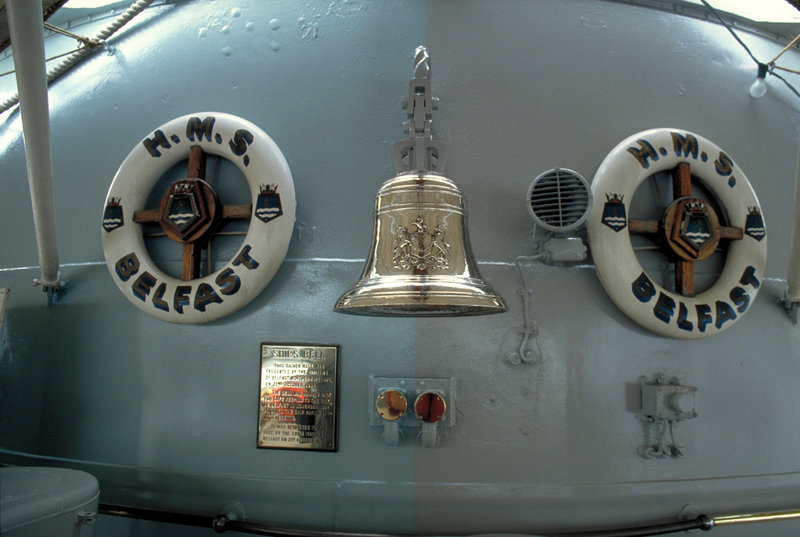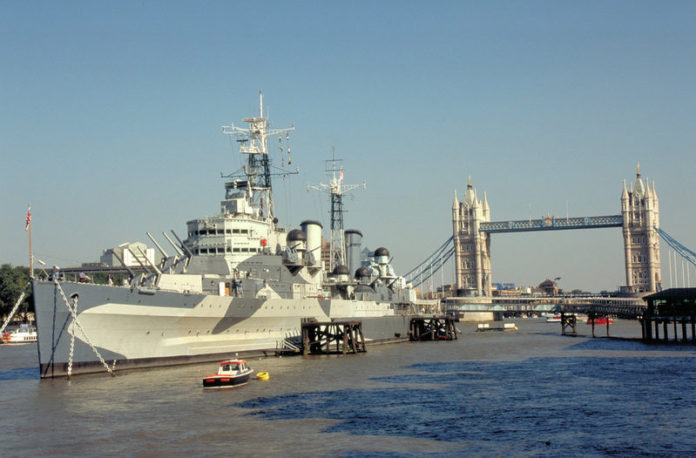HMS Belfast was launched into service 80 years ago this March. Here, we chart the history of this heroic ship from the Second World War to her home on the Thames
There’s glamour and gravitas to the magnificent ship moored on the River Thames in the shadow of Tower Bridge and the Tower of London. HMS Belfast is the last remaining Royal Navy Second World War cruiser – and this March marks 80 years since her launch.
From the D-Day landings to the Korean War, HMS Belfast has played its part in some of the key moments in maritime history. As Ian Kikuchi, a senior curator at IMW, notes: “HMS Belfast is a rare survivor, a veteran warship and a unique witness to 20th-century conflict.”
HMS Belfast was ordered from Harland and Wolff in 1936 at an expected cost of just over £2 million. The 11,500 ton vessel had 12 six-inch guns and a maximum speed of 32 knots, making it one of the largest, most well-armed and technologically advanced light cruisers of her day. She was launched on 17 March 1938, by Anne Chamberlain, the wife of Prime Minister Neville Chamberlain; and commissioned in August 1939, a month before the Second World War.

HMS Belfast was part of the initial British naval blockade against Germany, but disaster struck early when she hit a German mine just a couple of months into the conflict. Repairs were extensive and took two years. After her return, she escorted Arctic convoys to the Soviet Union and helped destroy the German warship Scharnhorst in the Battle of North Cape. In 1944, she supported the Normandy landings in Operation Overlord. She was even sent to the Far East to join the British Pacific Fleet, arriving just before the war ended.
Life on board was basic. Sailors slept in hammocks, washed their clothes in buckets and did their own cooking using lots of corned beef. The Arctic journeys were particularly dangerous, with sailors at risk of frostbite as soon as they stepped on deck.
In the early Fifties, HMS Belfast saw action in the Korean War, remaining in service until 1965, when she became a harbour accommodation ship.
Her current life as a museum ship began on 21 October 1971. Today, visitors can explore the ship’s nine decks to learn what life was like for the sailors. The anniversary weekend, 17-18 March, will be particularly momentous – check the IMW website for details. There will also be opportunities to help conserve the ship during February, in preparation for celebrations to mark 80 years of heroic service.






 © 2024
© 2024